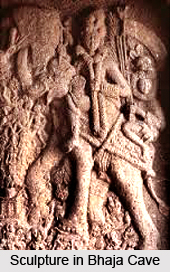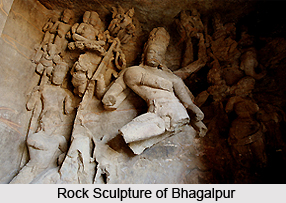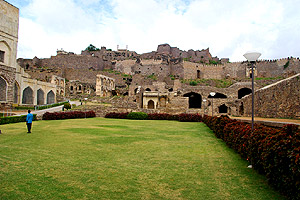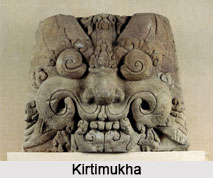 Contemporary Indian Sculptors are choral about the Indian identity. Contemporary Indian Sculptors have added weights and volumes of work to the domain of Contemporary Indian Sculpture.
Contemporary Indian Sculptors are choral about the Indian identity. Contemporary Indian Sculptors have added weights and volumes of work to the domain of Contemporary Indian Sculpture.
Sculpture essentially being a public art lays bare the cudgels of modernity, avant-garde expressionistic modes and futuristic ways. While the middle and pre-independent era manifested the lack of independence on the part of Indian Sculptors, as they were mostly commissioned for work and under quintessential patronage, post liberalization era witnessed the affluent emergence of new array of ideals which was a far cry from the stains of dogma or ideological shackles.
Modern Indian Sculptors
The beginning of modernization in Indian sculpture can be traced to its variation of western school art traditions in the early 20th century. Sculptures were at present created to supply the demands of the recently emerging higher and middle social classes. The modernism of Indian sculptors can be seen in the strong and embellished practicality throughout this period. The famous contemporary Indian sculptors are as follows:
Somnath Hore: Somnath Hore in his youth he became affiliated with the Communist Party of India, his socialist ideologies influenced the early phases of his artistic career. It was through the active patronage of the Communist Party that he gained entrance to the Government Arts College in Kolkata. One of his largest sculptures, "Mother and Child" was dedicated to the sufferings of the people of Vietnam.
Dhruva Mistry: Dhruva Mistry had shaped himself as an artist while experiencing the West during a period in which British art was changing. Rich imagery and narrative content of Indian art and the highly developed skills of a dedicated sculptor characterize the sculptures of Dhruva. All his work is not narrative. They have influences from Hinduism, Buddhism and West - Egyptian and Cycladic art and European traditions of figurative sculpture. His works are conceptual.
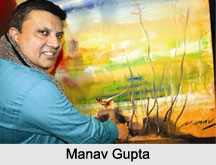 Trupti Patel: Trupti Patel has been centred on the human figure and their conditions. Initially her works in India were cast in plaster and gradually she moved towards working in clay, which was then fired. She adds colour carefully usually working it into the body of the clay. Female form and issues surrounding the female role within the family and in society are the recurring themes in Trupti Patel`s sculptures.
Trupti Patel: Trupti Patel has been centred on the human figure and their conditions. Initially her works in India were cast in plaster and gradually she moved towards working in clay, which was then fired. She adds colour carefully usually working it into the body of the clay. Female form and issues surrounding the female role within the family and in society are the recurring themes in Trupti Patel`s sculptures.
Preeti Chandrakant: She is the first artist in worldwide to produce and show, Art Beings - humans who have been sculpted by her over various years and programmed with Time Pieces which can be acquired, packaged, insured, displayed, resold and auctioned. Chandrakant`s work discovers the interrelationship between knowledge and change.
Manav Gupta: He has won global applause for his first of its class six floor high 5000 square ft in disguise and 10,000 square ft of full painted exterior, charged mega wall painting at the headquarters of foremost telecom company colossal in Gurgaon where he painted Live for three months though involving thousands of employees" brush strokes in his establishment The Tree of Life.
Latika Katt: She is famous for winning the Beijing Art Bienalle Award. Latika Katt is an Indian sculptor who specializes in stone carving, metal casting and bronze sculpting. Her talent was spotted by Indira Gandhi in an art exhibition who later encouraged her to take sculpting as an occupation.
Renuka Kesaramadu: She is best recognized globally during her combined art exhibitions and participations in workshops in Europe. She served as a member of the Karnataka Lalit Kala Academy in Bengaluru from 1995 to 1998 under the directorship of C. Chandrashekhar.
Rooma Mehra: Rooma Mehra is an artist with a communal ethics, who had 11 solo shows of her paintings, reliefs and sculptures. Her artworks are found in concealed and enduring collections counting the National Gallery of Modern Art New Delhi and Lalit Kala Akademi.
Mrinalini Mukherjee: Mrinalini Mukherjee was recognized for utilization of folk and tribal art techniques to immense creative improvement in her works. She has an exceptional influence in contemporary Indian art and is best identified for her knotted sculptures with hemp ropes.
The pioneer in the new school of Indian realism was Raja Ravi Verma. Raja Ravi Verma depicted scenes from Indian mythologies and presented them in a realist-romanticist format. A spirit of humanism is celebrated throughout which is infused with a sense of spiritual which is reminiscent of the classical sculptural styles. Search for pure form induced by European aesthetics added new and interesting dimensions. Experiments with unusual materials of classical traditions folk and tribal sources profound effect on the artistic imagination is widely observed.
Indian art has reached a terribly high degree of sophistication and abstraction at various times in Indian history. Amalgamation of European and Oriental styles is what Indian sculptural scenario consists of.
